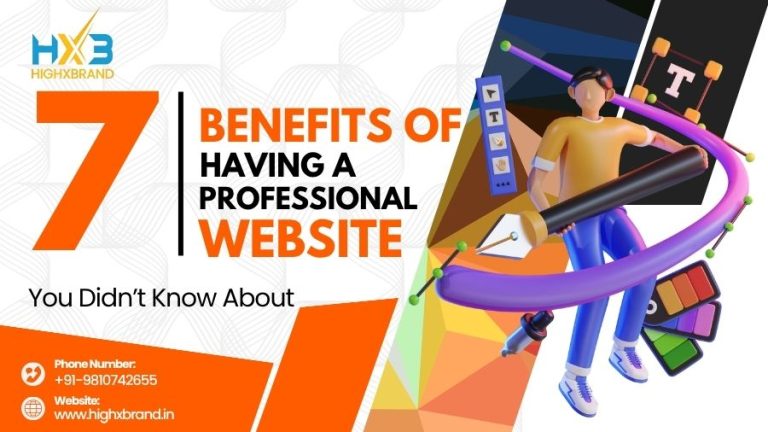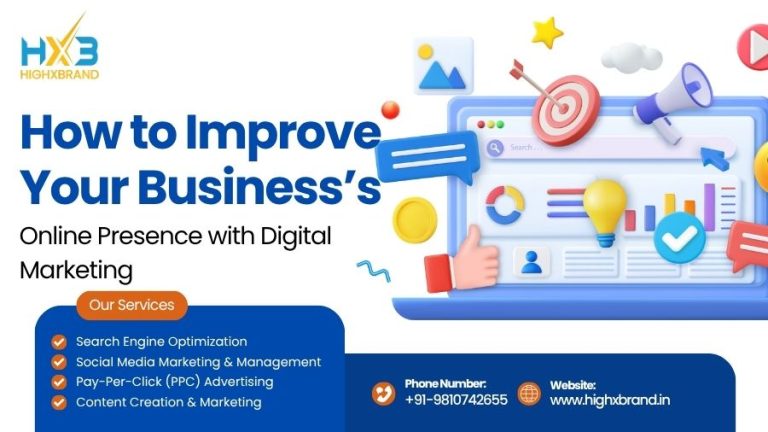Having your website included in Google’s AI Overviews is an emerging area of search engine optimization (SEO). As AI-powered summaries become an increasingly important search result feature, having your content selected will increase visibility, credibility, and trust. You will learn specific actions you can take and best practices which will increase the chances that the content you produce will be included with Google’s AI, using the same keywords, in a cognitive, feasible, well thought out way, and with an SEO strategy that works for HighXBrand India.
What Are Google AI Overviews?
Google AI Overviews are summary blocks of content at the top of the search results that synthesize content related to a search term from multiple web pages to give users an answer that is quick and clear. Google AI Overviews use Google’s language models (for example, Gemini), and Google’s regular search index.
AI Overviews are different from classic featured snippets in that the content consists of multiple sources paraphrased, synthesized, and assembled into a narrative or structure.
Google does not guarantee that any page will be included, even if is a high-ranking URL, the creator of the content will not know for certain that it is included until the listing goes live. This is developing so keep that in mind as you move forward, also thinking of ways this new search engine feature takes very localized, for only enhancing content produced for India and related regions. There are strategies to enhance what you put out there, that to the best of your ability, if your expertise and experience blended with these suggested strategies, you will increase your odds of being included.
Essential Foundations Before Strategy
These principles act as a foundation (and should be the basis for your SEO and content strategy for, HighXBrand India) prior to executing strategy (tactics):
- Quality of content is nonnegotiable – Google states, “quality, unique, non-commodity content” is still the most important factor.
- User intent, and completeness of answers – AI Overviews prefer content that provides a deep answer to the question being asked, as well as information to help the users next move, versus short fluffy content.
- Technical quality and accessibility – if your content is blocked from indexing correctly, slow to load, poor structure – Google will not pick it out.
- E-E-A-T (Experience, Expertise, Authoritativeness, Trustworthiness) is also a strong signal. If the content shows quality knowledge, cites materials or sources, and has authority in the space that unaccompanied is a signal for Google.
- Width of topics, clustering the topic, and linking to other posts throughout your site also helps signify to Google you are covering the subject in-depth.
So with those needed in place this is the tactical path to take.
Tactical Path to Elevate Chances of being included in AI Overviews
This is a step-by-step process. You can take this applied thinking and adapt to any type of content to your site (blog posts, guides, product pages, etc.) branded as “HighXBrand India”
1. Identify the Right Target Topics /Keywords (with the strategic views).
- Look for informational and “how to / why / what” types of topics where each user would expect to provide summary or overview related to each topic. These
- Try to use long-tail keywords and queries based on questions (for example “how to optimize website for AI overviews”, “why Google AI Overviews matter for SEO”) than generic, single word queries.
- Evaluate what queries trigger AI Overviews (you can utilize tools like Ahrefs, Semrush) and identify how your content can be an opportunity.
2. Create Deep, Structured, Clear Content:
As you write, utilize best practices (and ensure targeted keyword phrases are approximately ~1% density when possible):
- Create clear H2 / H3 section headings that match the user queries / sub-topics (this helps with the AI parsing your content)
- Start the content with a clear overview or definition, and then build on this. I’ve noticed AI Overviews will use content from the first paragraphs or first overview if it’s a listed format.
- Utilize bullet, numbered steps, tables, what format, bolding / italicizing emphasis of meaningful ways to clarify content of the topic (AI likes to reuse a list structure).
- Answer the users query fully and also think about the next anticipated question (follow ups) and work that mention somewhere in the content later.
- Include real examples, anecdotes, numbers, references, or case studies to build authentic (and better E-E-A-T).
- Employing internal links amongst pages (in a topic cluster manner) assists Google and the AI with context and depth
- Using structured data/schema markup (Article, FAQ, HowTo, etc.) helps search engines understand and interpret your content context
- Use multimedia images, layouts, and videos (especially YouTube embeds). AI Overviews conjure visuals from information or cite videos
3. Technical SEO & Page Experience
Your content must be crawlable, indexable, and performant
- Make sure you are not blocking Googlebot (robots.txt, meta tags).
- Resort to website SEO norms – title tags, meta descriptions, headings, alt attributes, url structure
- Make sure you’re mobile responsive and passing Core Web Vitals (Load time, responsiveness, stable layout)
- Keep your HTML clean – do not render your main content through a complex rendering site or framework
- Fix broken links, chains of redirects, duplicates
- Use canonical tags if need be
4. Promote Authority Signals/Backlinks
To aid Google’s AI in trust your content:
- Seek references, backlinks, and citations from reputable websites in your niche.
- Seek mentions through articles, blogs, forums (Q&A), social.
- Display author credentials or expert bio for your writers (it adds trust).
- Think about citing credible external sources (noodles, journals, studies, etc.) through your article
- Utilize schema markup structured data FAQ/Q&A to assist in snippet generation.
5. Aim for Snippet-Friendly Content
Since AI Overviews often borrow small sections or answers, you should:
- Include wordy definitions or explanations close to the top or in headings.
- Use “direct answer” paragraphs (ie, “Simply put, to get into AI Overviews, you must…”).
- Use bold/italic to emphasize important phrases.
- Write concisely, and be careful in longer parts of the page that you want to quote or borrow.
6. Refresh and Update Content Regularly
AI Overviews often prefer freshly updated content:
- Revisit your content for quarterly or weekly refreshes to provide updated examples, statistics, links, and emerging developments.
- Manually re-submit updated URLs to Google Search Console (request indexing).
- Update longer articles where length feels stale and lacks interest to expand coverage.
7. Track & Measure (and rethink)
- Check your SEO tools (Ahrefs, Semrush) to filter which keywords trigger AI Overviews and assess whether your content appears.
- Track impressions, CTR, dwell time, engagement metrics (time on page, bounce).
- Assess pages that are triggering, getting included, compared to pages that are not.
- Examine the A/B differences for lists, FAQs, visuals formats etc.
- Track Google’s evolving documentation (they re-update how these AI experiences work).
FAQ
Here are example FAQ entries to include (marked up with FAQ schema). Feel free to change wording to make it your own and use your keywords.
Q1: What does it mean for my site to show in Google AI Overviews?
A1: This simply means that Google’s AI system selected your content to be part of a synthesized summary shown at the top of the search results. It gives your site increased visibility and brand presence – even if not always driving full traffic.
Q2: Are AI Overviews replacing traditional search results?
A2: Not entirely. AI Overviews only really complement traditional results—they give you a quick summary and still point you to individual pages. Some users might not click, but your content can still exist in the overview and be credited.
Q3: How long does it take to see a result?
A3: It depends, if your site is already referring authority, it can take a few weeks to months. If your site is newer, it is going to take you much longer to build authority and signals. This can also take several months.
Q4: Can I force Google into taking my content into an AI Overview?
A4: No. You can’t force inclusion. But if you optimize on all levels, content, technical SEO, and authority, you would have greatly improved chances.
Q5: Will improving my content for AI Overviews hurt my traditional SEO?
A5: Not if that’s done correctly. Most of the tactics (structured content, fast pages, quality content) will help both types of performance. Just avoid overoptimizing or stuffing your writing with keywords in ways that feel unnatural.
Q6: Should I block my content from being included in AI Overviews?
A6: Using tags like noindex, or nosnippet or data-nosnippet may stop AI from quoting your content, but it often stops traditional indexing or limits the amount of exposure too. Use these carefully.
Q7: Do media elements (images, videos) help with AI Overviews?
A7: Yes. Google’s AI is increasingly using multimodal content, and images or videos can demonstrate increased trust in your content and increase context as well.
Conclusion
It’s not about manipulating algorithms, to get your website inside Google’s AI Overviews. It’s about producing genuine, structured, and authoritative content that AI will trust. By concentrating on the quality of content, technical SEO, and a user-first design, your website can earn its place in this new search experience.
At HighXBrand, we believe that the future of SEO is manipulating data but with our human creativity. We work with brands to create content that not only ranks, but is other AI systems rely on as a source for their own AI Experiments. Make your business noticeable in an evolving search environment; start working towards AI Overviews — and let HighXBrand be your digital success partner.




